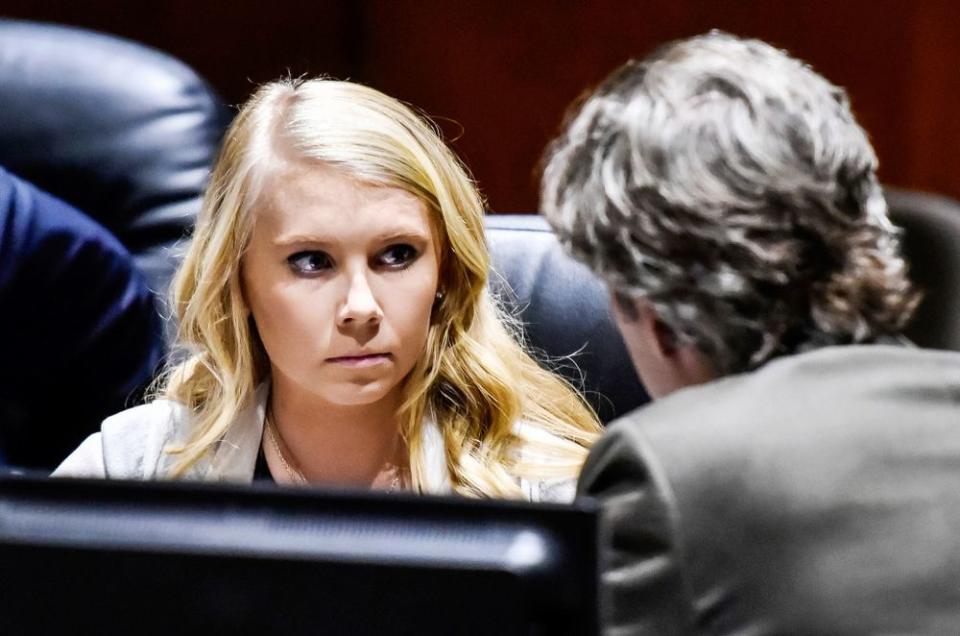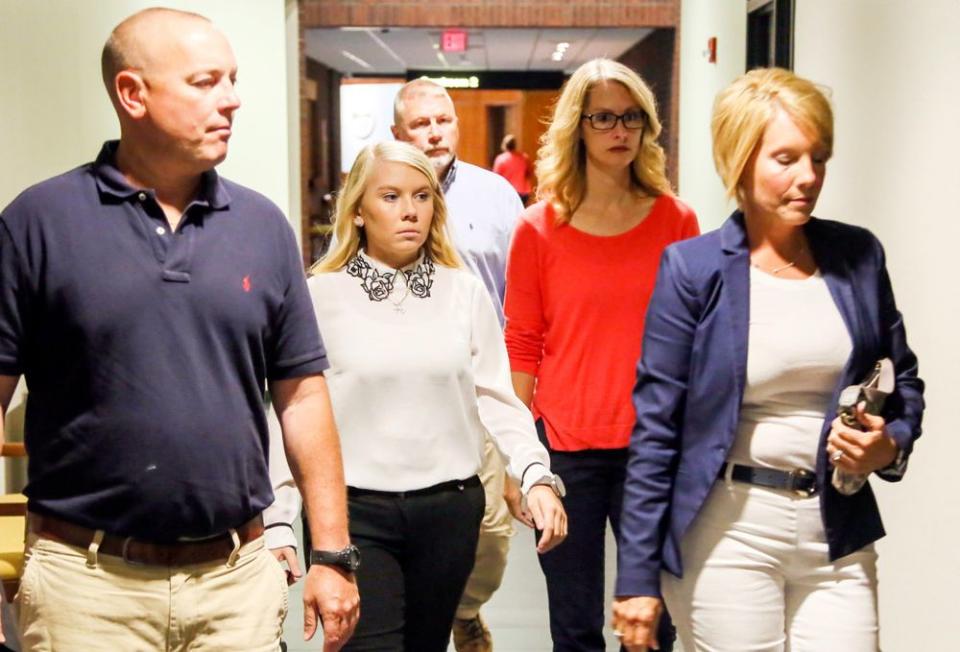Brooke Skylar Richardson — Cheerleader Acquitted of Killing Baby — Speaks Out in First Interview

Brooke Skylar Richardson, the Ohio woman accused of killing and burying her newborn daughter, was found not guilty of aggravated murder, involuntary manslaughter and child endangerment in a controversial verdict in September.
Now, the 20-year-old acquitted cheerleader — who was found guilty on one charge of gross abuse of a corpse, for which she’ll serve three years probation — is opening up about the trial, as well as her version of what happened to her baby.
Richardson was accused of killing and burying her newborn daughter in her backyard in July 2017. Prosecutors alleged she did not want to be an 18-year-old single mother, while Richardson’s attorneys argued that the baby was stillborn and didn’t meet the legal criteria to be considered a child.
“My biggest regret is not having the strength to tell someone that I was pregnant,” she told Cosmopolitan in an exclusive interview. “I wish I would have done it differently. I’m plagued by guilt every day for not telling someone.”
RELATED: Expert Explains: Why Was Cheerleader Acquitted of Killing Newborn She Later Buried?

On April 26, 2017, shortly before her prom, Richardson’s mom took the teen to her first gynecologist appointment, according to Cosmopolitan. It was there that Richardson learned she was 32 weeks pregnant, news she says she chose not to share with anyone.
In a police interview played in court, Richardson allegedly told police that she didn’t return her doctor’s phone calls because she was scared. “I didn’t really want to have my baby,” she told police. “I really don’t know what I planned to do.”
• Want to keep up with the latest crime coverage? Click here to get breaking crime news, ongoing trial coverage and details of intriguing unsolved cases in the True Crime Newsletter.
She also told police that she looked into an abortion, but it was too late to have one. She denied that she performed an abortion on herself.
She danced at prom on May 5, avoiding drinks and still choosing not to disclose her pregnancy. She’d tell someone soon after, she thought. The next day, she claimed she had intense cramps and made her way to the bathroom because she felt that “something needed to come out.”

RELATED: 5 Things to Know: Ohio Teen Accused of Killing Her Newborn and Burying the Body Behind Parents’ Home
Richardson claimed to Cosmopolitan she experienced a stillbirth,stating that the baby never cried or opened her eyes, and that the umbilical cord was not attached. She then named the baby Annabelle and buried the body in a shallow grave in the backyard.
“I decided to call her Annabelle. I didn’t know anyone with that name, so I knew whenever I heard it, it would remind me of my baby girl,” she said.
Richardson said that during her trial she became depressed, wishing she “could have died in place of Annabelle.”
Last month, Richardson’s family buried Annabelle in a plot far from their town, she told Cosmopolitan.
“It is such a relief to know that Annabelle is now in her final resting spot,” Skylar said. “I visit every week.”
Under guidelines set by Judge Donald Oda II — who said Richardson’s choices showed a “grotesque disregard for life” — she could spend up to a year in jail if she violates her probation.
“The prosecution had a real hurdle that they were never really going to get over, which was the real inability of any of their folks to state with certainty that Skylar’s baby was ever alive after birth,” Bill Gallagher, an Ohio criminal justice attorney who was not involved with the case, told PEOPLE after the verdict.
“In this case, what they were relying on were statements that she made during police questioning that either implied, indicated or sometimes inferred the child was alive,” he said.

